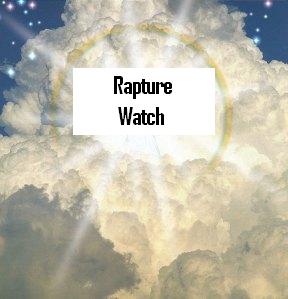I came across a post online after watching a video that mentioned this holiday. My interest was peaked with thoughts of the Rapture of the Church. Here is what I saw:
Some History behind Tu B’Av
1. Tu B’Av marked the end of the “desert generation.”
The Torah relates that the entire generation of Israelites rescued from Egypt was sentenced to die while in the desert (Parashat Shelach). According to the Midrash Eichah Rabbah, every year until the fortieth year, on the eve of the Ninth of Av, Moses would command the people, “Go out and dig,” and the people would leave the camp, dig graves, and sleep in them overnight. The following morning a messenger would proclaim, “Let the living separate from the dead!” Fifteen thousand would die that very night, but the survivors would return to the camp for another year.
This occurred year after year, but in the fortieth year no one died. Since they thought they might have miscalculated the days, they slept in their graves an additional night. This went on for five nights until the fifteenth of Av, when they saw the full moon, realized that there calculations were correct, and rejoiced that no more of the first generation would die. They subsequently declared Tu B’Av a day of celebration. The “desert generation” had finally died off and the new generation was finally ready to enter the land!
The Talmud (Bava Batra 121b) also states that while the first generation was dying out, the LORD did not speak to Moses, except through the Urim and Thummim.
2. Tu B’Av marked the time when the tribes of Israel were permitted to intermarry.
The first generation of Israelites that entered the land to receive their portion of land were instructed to intermarry only within their own tribe, unless the woman to be married had at least one brother (Numbers 36:7-9). However, the Talmud (Bava Batra 121a) states that on Tu B’Av the next generation of women was granted permission to marry whomever they desired (within Israel), since the land had been allocated among the various tribes.
3. Tu B’Av marked the restoration of the tribe of Benjamin.
On Tu B’Av the leaders of Israel allowed the tribe of Benjamin to repopulate (after their civil war with the other tribes of Israel) by allowing the surviving 600 males to marry “daughters from Shiloh” (Judges 21:16-24). [Shiloh was the first capital of Israel.] After the war it was pledged that no one would willingly give his daughter to a Benjaminite, but the decision was made to “look the other way” should a Benjamite male ran off with a girl who was dancing in Shiloh. In this way the tribe of Benjamin was saved from extinction.
Later, the leaders of Israel repealed this ban and said that the pledge applied only to those men who had taken the oath, and intermarriage with Benjamin was permitted.
4. Tu B’Av became a time of great celebration in Jerusalem.
Just as Yom Kippur demonstrated the reconciliation of Israel to the LORD after the incident of the Golden Calf, Tu B’Av was celebrated as the time of reconciliation for the Sin of the 10 spies (Parashat Shelach). Therefore Tu B’Av became a joyous time celebrating our forgiveness and restoration to the LORD. The Talmud (Mishna Ta’anit 4:8) states “Israel had no holidays as joyous as Tu B’Av and Yom Kippur, when the young women of Jerusalem would go out and dance in the vineyards.”
Later, Tu B’Av became known as a time of summer dancing and a courtship celebration. In a sort of romantic masquerade, the girls would exchange white clothing with one another so that their prospects would not know who could afford expensive dresses and who was only borrowing them.
In recent years this practice has been revived and Jewish girls from Shiloh (located about 40 minutes north of Jerusalem) dance in the same vineyards, while Chassidic musical artists provide entertainment.
5. Tu B’Av marked the end of Jeroboam’s blockade against Jerusalem.
King Jeroboam son of Nebat (Yerovam ben Nevat) was a king of the Northern Kingdom of Israel (922-901 BC), an evil ruler who enticed Israel into idolatry and forbade worship at the Temple in Jerusalem. His roadblocks were in place until they were finally removed by Israel’s last king, Hoshea the son of Elah (732-722 BC), who declared free passage to Jerusalem (Ta’anit 30a). According to tradition, these roadblocks were removed on the 15th of Av.
6. Tu B’Av marked the time of “Breaking of the Hatchets.”
After the Babylonian exile, Ezra and Nehemiah came to rebuild the First Temple but found the land desolate and all the trees uprooted by the enemy. They needed wood for the altar offerings, and contributions of wood came to be known as “wood offerings.” These offerings were celebratory events, similar to firstfruit offerings.
Tu B’Av came to be known as the “Day of the breaking of hatchets” since after this date it was forbidden to cut down trees for use in the Temple fires (Ta’anit 31a). Wood used to fuel the altar had to be entirely dried out, but after Tu B’Av the days become shorter and there was not enough sunlight to dry out freshly cut logs. By this date, then, all the cutting of the wood for the altar was completed and the supply was replenished until the next summer.
7. Tu B’Av marked the end of the year for planting.
Tu B’Av was instituted (in the Second Temple period) to mark the beginning of the grape harvest, which ended on Yom Kippur. It was also the time when planting of trees and crops was to end for the year (trees planted after this date are considered to take root after Rosh Hashanah, and therefore belong to the following year for the purposes of the Sabbatical Year).
8. Tu B’Av marks the final Jewish Holiday of the year.
On the Jewish calendar, Tu B’Av occurs a week after Tishah B’Av – the culmination of the three weeks of sorrow – and traditionally marks the end of summer and all of the holidays of the Jewish year. Moreover, Tu B’Av acts as a sort of preface to the month of Elul when the cycle of holidays begins again with Rosh Hashanah. As such it marks the last celebration of the current Jewish year, and is a time of happiness and joy.
Since it falls on the fifteenth of the month, Tu B’Av is a night of the full moon. Since the ninth of Av (Tishah B’Av) recalls the history of Jewish tragedy, the full moon of Av is said to represent the transformation of tragedy into joy.
9. Tu B’Av marks a time of romance and love in modern Israel.
In modern day Israel it is customary to send a bouquet of red roses to the one you love on Tu B’Av. Romantic songs are played on the radio and parties are held in the evening throughout the country. In addition, Tu b’Av is a popular date for Jews to hold weddings (and they are not required to fast before the wedding on this day either).
10. Tu B’Av prophetically pictures the Marriage of the Lamb of God.
Since it is the “last” festival of the Jewish year, prophetically Tu B’Av pictures our marriage to the Lamb of God (Seh Elohim), the LORD Yeshua our beloved Mashiach:
Then I heard what seemed to be the voice of a great multitude, like the roar of many waters and like the sound of mighty peals of thunder, crying out, “Hallelujah! For the Lord our God the Almighty reigns. Let us rejoice and exult and give him the glory, for the marriage of the Lamb has come, and his Bride has made herself ready; it was granted her to clothe herself with fine linen, bright and pure” – for the fine linen is the righteous deeds of the saints. And the angel said to me, “Write this: Blessed are those who are invited to the marriage supper of the Lamb.” And he said to me, “These are the true words of God” (Revelation 19:6-9).
On a soon-coming day those who belong to the LORD and are faithful to follow His ways will be blessed with the unspeakable joy of consummating their relationship with Him. This is heaven itself – to be in the Presence of the LORD and to be His beloved. The analogy of a joyous Jewish marriage, with the sheva berachot (intimating the seven years of rapture before terrible the Day of the LORD at the end of the Great Tribulation), is our great and blessed hope (Titus 2:13).





























